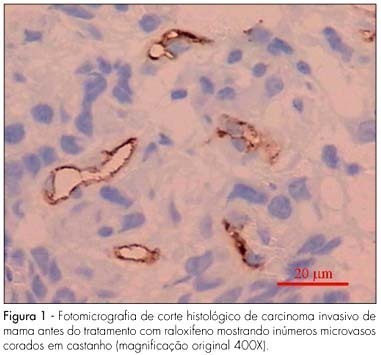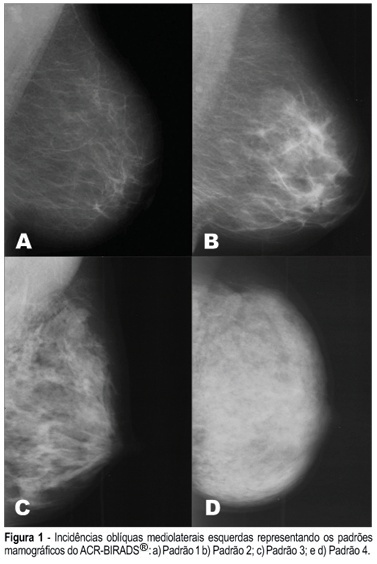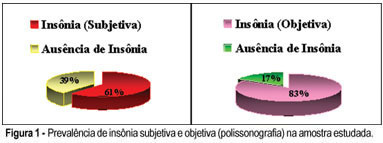Summary
Revista Brasileira de Ginecologia e Obstetrícia. 2007;29(10):525-531
DOI 10.1590/S0100-72032007001000006
PURPOSE: to evaluate changes in mammographic breast density in postmenopausal women using raloxifene. METHODS: in this clinical trial, 80 women (mean age=61.1 years) were studied prospectively. Forty patients received 60 mg/day raloxifene, and 40 women comprised the non-treated group (control), paired by age and time of menopause. The treated group was composed of patients with osteoporosis of the lumbar spine. Those with history of breast surgery and users of hormone therapy up to six months prior to the study were excluded. The breast density was assessed qualitatively (subjective) and quantitatively (objective) in two moments, initial and final, after a 6-month follow-up. The 320 mammograms (craniocaudal and oblique) were interpreted qualitatively by the Breast Imaging Reporting and Data System (BI-RADS) classification and quantitatively by digital scanning and computer-assisted segmentation. For statistical analysis t-test, Wilcoxon Mann-Whitney, Spearman correlation and the kappa index were used. RESULTS: on the initial statistical comparison, the groups were considered homogenous for the variables: analyzed age, time of menopause, parity, breast feeding, previous hormonal therapy and body mass index. Baseline breast density, by qualitative and quantitative methods, correlated negatively with the age in both groups (p<0.05). Concerning the other variables, there was no correlation. After six months, no alteration was observed in the mammographic breast density in 38 women of raloxifene group and 38 of the control group, by qualitative method. However, by quantitative method, no alteration was observed in 30 women of the raloxifene group and 27 controls (p>0.05). It was observed a weak agreement rate (kappa=0.25) between the BI-RADS classification and digital scanning/computer-assisted segmentation. CONCLUSIONS: in post-menopausal women with osteoporosis, submitted to raloxifene treatment for six months, no alterations were observed on the mammographic breast density.
Summary
Revista Brasileira de Ginecologia e Obstetrícia. 2007;29(7):335-339
DOI 10.1590/S0100-72032007000700002
PURPOSE: to evaluate the effect of raloxifene on breast cancer angiogenesis of menopausal women. METHODS: sixteen menopausal women with stage II (>3 cm) estrogen receptor positive operable breast cancer were enrolled in this study. Following confirmation of the diagnosis by incisional biopsy, the patients received 60 mg raloxifene daily for 28 days prior to the definitive surgery. Immunohistochemical study was performed on the sample tumors obtained during the biopsy for the diagnosis and evaluation of the status of estrogen receptor and during the definitive surgery. The anti-CD34 monoclonal antibody was used as a marker for endothelial cells. The vascular unit was considered as any endothelial cell or group of cells of a brownish color, clearly separated from adjacent microvessels, tumor cells or other connective tissue, forming or not lumen. Microvessel count was performed in ten fields of each slide using a 40X objective lens (400X magnification). A microscope coupled to a system of capture and analysis of image was used (Imagelab®). Statistical analysis of data was carried out using the paired Student t-test and significance level was established at p<0.05. RESULTS: mean numbers of anti-CD34 antibody-stained microvessels before and after raloxifene treatment were 44.4±3.5 and 22.6±1.6, respectively. A significant reduction in the number of microvessels following raloxifene therapy was observed (p<0.001). CONCLUSIONS: when administered as primary therapy for menopausal women with breast carcinoma, raloxifene significantly reduced tumoral angiogenesis.

Summary
Revista Brasileira de Ginecologia e Obstetrícia. 2007;29(5):248-252
DOI 10.1590/S0100-72032007000500005
PURPOSE: to analyze the isoflavone and estrogen effects on the postmenopausal quality of life. METHODS: this is a randomized and double-blind study with 79 postmenopausal patients, 12 months of amenorrhea, 40 years old or more and body mass index (BMI) above 30 kg/m². The participants were randomly divided into two treatment groups: GECP received orally two capsules, every 12 hours, one contained 0.625 mg conjugated equine estrogen and another placebo (n=33); GECS received two capsules of 150 mg extract of soy, with 60 mg isoflavone (n=32). Both treatments were administered for six months. The Quality Menopause Specific Questionnaire of Life was applied before and after one, three and six months of treatment. The parameters of gynecological cancer risk were evaluated. ANOVA and the Tukey test were used for data analysis. RESULTS: there was a reduction in the values of the vasomotor parameters after six months of treatment, 1.6±0.8 and 2.4±1.6, compared to before therapy, 4.0±2.2 and 4.2±2.3 in GECP and GECS, respectively. The psychological aspects showed reduction in values after six months of therapy, 2.5±1.2 and 2.9±1.4, compared to before treatment, 3.6±1.6 and 4.1±1.9 in GECP and GECS, respectively. Similar results were obtained on the physical aspects and in the sexual symptoms. CONCLUSIONS: isoflavones may positively act on life quality of postmenopausal women. This effect was similar to conjugated equine estrogen.
Summary
Revista Brasileira de Ginecologia e Obstetrícia. 2006;28(10):581-589
DOI 10.1590/S0100-72032006001000003
PURPOSE: To assess the presence of estrogen receptor gene polymorphisms HaeIII and MspI as well as clinical factors, and their possible associations with high mammographic density in post-menopausal women. METHODS: One hundred and fifteen post-menopausal women, not in use of hormonal therapy and without clinical or mammographic lesions were evaluated. Three independent observers have determined the mammographic density pattern based on the ACR-BIRADS® 2003 (two subjective and one objective evaluations - Adobe Photoshop 7.0 software). Oral swabs (Cytobrush) were obtained to extract DNA and the polymerase chain reaction - restriction fragment length polymorphism) was performed to assess the presence of polymorphisms in intron 1 and exon 1 from estrogen receptor gene (HaeIII and MspI). RESULTS: The HaeIII polymorphism was found in 43 (37.4%) of the 115 women, while MspI was found in 96 (83.5%) of them. There was a good agreement among determinations of the three observers with regard to mammographic density. Thirty-four (29.6%) women had dense breasts and eighty-one (70.4%) had non-dense breasts. CONCLUSION: The estrogen receptor gene polymorphism Haelll showed no association with mammographic density (Fisher = 0.712), while the association between estrogen receptor gene polymorphism Mspl and mammographic density was near significance (Fisher = 0.098). The associations among age, parity and body mass index revealed statistical significance.

Summary
Revista Brasileira de Ginecologia e Obstetrícia. 2006;28(9):545-550
DOI 10.1590/S0100-72032006000900007
PURPOSE: to evaluate muscular strength of the pelvic floor and the periurethral vessels of postmenopausal women before and after six months of soybean extract treatment. METHODS: the study was conducted on 30 postmenopausal women before and after six consecutive months of soyabean extract (100 mg/day) administration. Urinary loss and muscular strength of the pelvic floor were investigated through digital perineometer and functional evaluation. Digital color Doppler in the periurethral region was used to count the number of vessels. For statistical analysis, the paired Student t test was applied to compare the results before and after the treatment. RESULTS: twenty women reported urinary incontinence before the treatment period. The amelioration of this symptom was observed in 15 (75%) women after the treatment. Vaginal pressure (muscular strength of the pelvic floor) was 12.95±1.73 and 15.86±1.86 Sauers, before and after the treatment, respectively (p<0.001). Twenty-two women (73.3%) presented an increase in the pressure at the end of this study. In relation to the function evaluation, 18 (60%) had improvement in muscular strength and 12 women did not present any change. On ultrasonography (Doppler), the number of vessels was 2.20±0.15 blood vessels/field in the beginning of this study and 3.46±0.25 blood vessels/field at the end of the treatment (p<0.001). An increase in the number of periurethral vessels was detected in 21 women (70%). CONCLUSION: it is important to emphasize that these are preliminary results. A double blind randomized and placebo-controlled clinical trial with a high number of participants is necessary. However, the treatment with concentrated soybean extract (100 mg per day) for six consecutive months may determine an improvement in pelvic floor muscular strength and an increase in the number of periurethral vessels in postmenopausal women.
Summary
Revista Brasileira de Ginecologia e Obstetrícia. 2005;27(12):731-736
DOI 10.1590/S0100-72032005001200005
PURPOSE: to evaluate the prevalence of reported sleep disturbances through polysomnographic recording (PSG) in a sample of postmenopausal women. METHODS: thirty-three postmenopausal women with a mean age of 56 years, a mean body mass index (BMI) of 27 kg/m², with 7.7 years of recognized postmenopausal period, and a mean Kupperman index of 17, were selected. The inclusion criteria were: age range from 50 to 65 years, at least one year of amenorrhea and an FSH which equaled or exceeded 30 mU/ml; they should not be undergoing hormone therapy, and should display normal laboratory test results. The patients with severe clinical diseases and/or decompensated were excluded; also the ones with suspicion of carcinoma of endometrium and/or breast cancer, a BMI over 30 kg/m² and those who ingested hypnotic drugs. The patients followed a routine climacteric check-up, answered a questionnaire about sleep and underwent an all-night PSG recording. Frequencies in percentage of emerging sleep complaints based on the questionnaire and those pertaining to PSG diagnosis were then calculated separately. RESULTS: the subjective prevalence of insomnia was 61% against 83% in the PSG recordings. The prevalence of apnea reported was 23% against 27% in the PSG. The subjective restless legs syndrome prevalence was 45%, and the objective, 27%. CONCLUSION: there was a high prevalence of sleep disturbances in postmenopausal patients, specially insomnia, apnea and restless legs.

Summary
Revista Brasileira de Ginecologia e Obstetrícia. 2005;27(8):467-472
DOI 10.1590/S0100-72032005000800006
PURPOSE: to evaluate the prevalence of subclinical hypothyroidism and its effects on lipidic profile and bone mineral density (BMD) in postmenopausal women. METHODS: a cross-sectional study with survey of data from medical records of patients attended at a climacteric outpatient clinic. Inclusion criteria: postmenopausal women with measured thyroid-stimulating hormone (TSH) and free thyroxin (T4-L). Exclusion criteria: hyperthyroidism and thyroid cancer. Values of TSH >5.0 mIU/ml and normal T4-L were considered to be subclinical hypothyroidism. The 329 selected women (55.2±6.4 years) were divided into three groups: normal thyroid function (control) (n=208), subclinical hypothyroidism (n=53) and clinical hypothyroidism under treatment (n=59). Clinical data, hormonal therapy use, body mass index (BMI=kg/m²), lipid profile (total cholesterol, HDL, LDL, triglycerides) and BMD of lumbar column and femur were obtained. RESULTS: subclinical hypothyroidism was diagnosed in 16.1% of the cases. The groups were homogeneous regarding clinical features, BMI or lipidic profile. BMD in lumbar column and femur was lower in subclinical and clinical hypothyroidism than in euthyroidism (p<0.001). There was a negative correlation between values of TSH and BMD of lumbar column and femur (p<0.001). There was no correlation between TSH values and age, menopause time, BMI, and lipid profile. The total of hormonal therapy users was 65.1%, mean duration of 3.43±2.42 years, not differing between the groups. CONCLUSION: subclinical hypothyroidism with prevalence of 16.1% in postmenopausal women was associated with lower BMD, with no effects on lipid profile.